I've previously covered binaural beats versus isochronic tones, but I'm yet to go down the road of binaural beats versus monaural beats. So I'm doing it right here, in this post.
True to form, there is a lot of misleading information online about monaural beats and a lack of substance to back up the claims.
What I mean by that is some information just outright dismiss them as ineffective, without any justification, whereas others will say that the best thing since sliced bread, again without any substance to back it up.
What I also found was that the majority of explanations on how monaural beats work are really confusing. In many instances, I'm not even sure that the author really understands what they are writing themselves. That sounds a bit condescending, I know.
But what I found was that people were regurgitating the same information, which was probably taken from quite a technical source, i.e. someone who did know what they were talking about, but when you try to rewrite the information it doesn't make sense.
So in this post, I breakdown what monaural beats are, and what the difference is between this type of brainwave entrainment and binaural beats.
Disclaimer: Although my website title is binaural beats freak, I only have preference for what is most effective according to the science available, and in my experience.
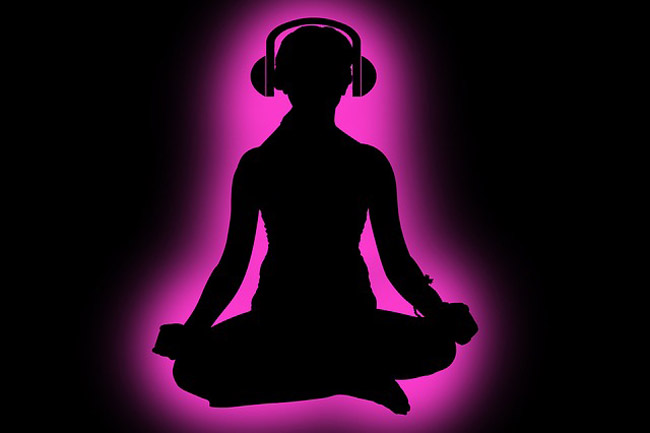
What Are Monaural Beats?
To understand monaural beats, we simply need to understand what the word monaural means and what it relates to in terms of music.
Monaural sound is also known as “monophonic” sound or simply “mono”. like so many words, the word mono comes from the Greek language:
word-forming element meaning “one, alone; containing one (atom, etc.),” from Greek mono-, comb. form of monos “single, alone,
You may have heard this word referred to in a musical capacity, as you would have with the word “stereo”.
For example, your headphones are stereo, and your stereo system is stereo. This is because these devices are capable of playing two signals, one from the left channel and one from right channel. They are also capable of playing mono sounds.
How so?
Because mono sounds are audio signals that are mixed and then routed through a single audio channel. With mono, there is no spaciality. The sound in each ear is identical.
The mono sound is reproduced through speakers, with each speaker reproducing a copy of the same signal. So you hear the mono signal through the left and right channels (ears) of your headphones, or out of each of your speakers, left and right.
So mono is a single signal, and stereo is two signals (or more), usually just to sent to a left and right channel.
Confused? Don't be.
Look at the screenshots below from my music software program. The first image is of a mono signal playing.
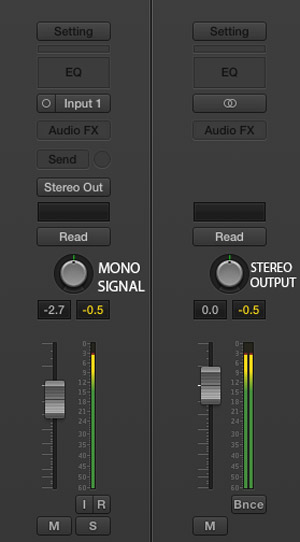
Mono signal. One sound playing on a single channel, but outputted via the stereo output so it can be heard in the left and right ears of headphones or speakers.
Can you see how it has only one illuminated bar, yet on the output signal (the channel on the right) it is being played back on both the left and right channels.
So this mono signal is being mixed though the left and right channels to provide a stereo signal (left and right) for the listener.
Now look at the image below. This is a stereo channel (on the left). It has illuminated bars on the left and right, instead of just one bar as we saw with mono above. The signal is sent as it is to the main left and right (stereo) output (on the left).
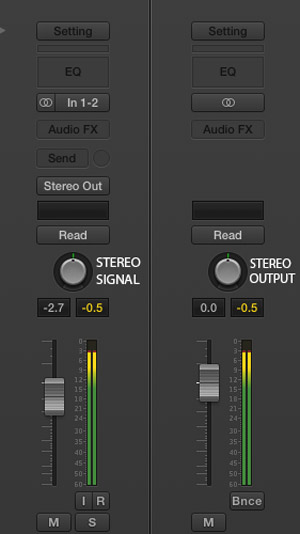
Here's another way to look at it.
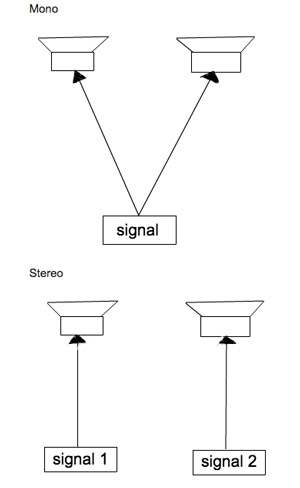
Diagram courtesy of Rob, on Stack Exchange.
How to Create a Monaural Beat?
Monaural Beats are created by the convergence of two separate frequencies. The signal is then outputted to the left and right channels so that the listener will hear the both frequencies in each ear. This directly stimulates the basilar membrane of the inner ear.
So let's say we take a 180 Hz frequency, and 185 Hz frequency. We converge the two on one channel (mono).
We then output the converged (mixed) signal to both the left and right channels, which means that when listening through headphones or speakers you will hear the same two frequencies playing in each ear (essentially a replication of the mono signal in each ear), and hear the difference between the two, which is 5 Hz.
So unlike binaural beats, the effect is created externally, before it reaches the ear. Let's elaborate on that…
What's the Difference Between Monaural Beats & Binaural Beats?
With binaural beats, the desired frequency is created when two separate frequencies are perceived by the brain. A frequency is sent to the left ear, and another to the right.
So, if we take the same above example, instead of premixing those two separate values of 180 Hz and 185 Hz, like we did with monaural beats, instead we send 180 Hz to the left ear and 185 Hz to the right ear.
When we listen through headphones, a process called frequency following response is triggered in the brain. The brain perceives the difference between the left and right frequencies, which is 5 Hz, and follows along at that rate. The brainwave entrainment is therefore at 5 Hz.
If you have managed to understand those two differences, then you have probably already realised that one big difference between monaural beats and binaural beats is that you can listen to monaural beats through headphones or speakers.
Binaural beats will only be effective when listened to through headphones.
In technical terms, however, binaural beats become monaural beats when listened to through speakers.
But hang on, before you think, “oh, great”, the problem is that when listen to binaural beats through speakers we are hearing the separate frequencies of 180 Hz and a 185 Hz, one out of the right speaker and one out of the left.
So unless we have the speakers positioned near enough to our ears, the brain won't pick up on the vibrations of each, match them together and produced the frequency following response.
But, while it might seem like an advantage that you can listen to monaural beats through speakers and headphones, unless you are sitting close to a speaker, the entrainment won't be that powerful. This is also the argument with isochronic tones.
It's funny, because all the articles I read that report the benefit of not needing to use headphones always leave this important piece of information out.
You see, regardless of the technology that you are using, brainwave entrainment is usually more effective when using headphones, because the signal is very close to your ears.
The Difference in Sound Quality/Property
There is a distinct difference in sound between monaural beats and binaural. Monaural beats pulsate from a low volume to a high volume, whereas binaural have very little change in volume and appear more as a constant tone.
This one simple reason may explain the popularity of binaural beats over monaural beats.
Indeed, this is the same for isochronic tones. Out of the three, binaural beats are more pleasant to listen to. This makes it easier to mix music and sound overlay with binaural beats, making for a more marketable product.
even if some research studies show parallel results between binaural and monaural beats, we have to consider that this technology is predominantly used for meditation purposes, so it wouldn't make sense to use a sound that was off-putting and disturbed your concentration.
The consistent, comforting and often hypnotising sound of a binaural beat is perhaps its greatest quality and is what makes it so well suited to meditation and entrainment.
Which is More Effective – Binaural Beats or Monaural Beats?
From a technical perspective they would both be effective means of entrainment. However, bar a few studies, pretty much every research study conducted in the area of brainwave entrainment has binaural beats as its method of choice.
One reason for this is because binaural beats are thought to be processed in a different part of the brain, called the superior olivary complex. We don't know this 100% for sure, because this area of the brain is very complex and still not completely understood, but research indicates this.
The superior olivary complex is a collection of brainstem nuclei that functions in multiple aspects of hearing and is an important component of the ascending and descending auditory pathways of the auditory system.
Because of this, binaural beats may have far-reaching clinical applications that we aren't yet aware of.
For example: for those with neurological damage, such as a patient who has trouble localizing the source of a sound such as the click of a finger, binaural beats could be used to determine where the neurological damage lies within the brain.
You might be thinking how this is possible, because surely the patient wouldn't be able to hear the binaural beats either. Well, binaural beats don't have to be audible for the process to take place, which makes research and use accessible for those with partial or full loss of hearing.
Binaural beats are said to stimulate the Thalamus. This part of the brain has several functions such as relaying of sensory signals, including motor signals, to the cerebral cortex, and the regulation of consciousness, sleep, and alertness. Because of this, studies have been conducted on the efficacy of binaural beats on these areas.
Monaural beats, on the other hand, are said to originate in the basilar membrane, an important component of the inner ear that is located inside the cochlea and moved by soundwaves that vibrate on the ear.
Monaural beats need to be heard to be effective, and therefore the clinical application is not as broad, as it potential excludes those with partial hearing, and excludes those with full loss of hearing.
Because of the research, it means that there is a lot more science to support the effectiveness of binaural beats over monaural beats, and indeed Isochronic tones.
Researchers continue to choose binaural beats as a preference because they have seen conclusive results gathered in other studies. So in short, they know they have the potential to work and affect the participants of the study.
Indeed, this study supports this theory in its conclusion:
To summarize, we show that a short application of monaural beat stimulation in healthy human participants is able to reduce feelings of anxiety. Although auditory beat research has tended toward using binaural beats as stimuli, our findings suggest a potential role for monaural beat stimulation in treating symptoms of anxiety disorders, in a fast and non-invasive manner. Future studies will aim at identifying ideal target populations for monaural beat stimulation and at optimizing stimulation parameters, for instance, by increasing the stimulation duration or by repetitive applications of the beat stimuli.
That doesn't mean that monaural beats aren't effective. Indeed, this study states:
At the cortical level, the temporal integration of monaural and binaural stimuli was comparable
It may just be the case that science sees more potential in binaural beats, and that because of their sound properties they are the more marketable of the two.
Leading Brands That Use Binaural Beats
Because binaural beats have become a research standard, this has driven popularity and meant that the majority of brainwave music is produced using binaural beats. Companies may combine this with other forms of sound manipulation, but generally binaural beats form the baseline. In fact, I don't know of any well-established producers of monaural beats music.
See the following brands for reference:
Binaural Beats Vs. Monaural Beats, In Summary
If some of the above when over your head, or you simply scroll past the majority of the information to get to this summary section, here in a nutshell are the differences between binaural beats and monaural beats.
Binaural Beats:
- Binaural Beats: 2 different signals, one to each ear. Effect is made internally by the brain, said to be generated by the Superior Olivary Complex
- Binaural Beats require headphones.
- Binaural Beats only change slightly in volume and are therefore more pleasant to listen to, particularly with music overlay.
- Binaural Beats said to affect the Cerebral Cortex and stimulate the Thalamus.
- Binaural Beats used as the standard for research studies.
- Binaural Beats don't need to be audible to be effective, making them accessible for those with partial hearing and the deaf.
- Binaural Beats known to be effective in the low frequency ranges; thus their popularity with the meditation music genre.
- Binaural Beats used by the majority of specialist companies to create recordings/programs
Monaural Beats:
- Monaural Beats: 2 frequencies mixed in one channel (speaker) and sent to both ears/speakers
- Monaural Beats don't necessarily require headphones, though it's always advisable (in my experience)
- Monaural Beats do need to be heard to be effective, making the ineffective for those with partial hearing and the deaf.
- Monaural Beats pulse from very loud to silent, and may be off-putting for the listener.
- Monaural Beats said to originate in the basilar membrane.
- Monaural Beats: very few research studies conducted, though effectiveness thought to be parallel at some frequencies.
Unfortunately research funding is quite low in the brainwave entrainment area, so we don't have nearly as many studies as we would for nutrition or cancer, for example. This also means that studies are generally smaller cohorts and done for shorter periods of time, because funding is key in maximising these areas.
While we have a fairly solid amount of research for binaural beats, research for monaural beats is fairly scarce. And indeed, apart from the study I have cited above that looked at both, there aren't any others that effectively measure the two against each other across a range of areas such as sleep, anxiety and focus.
The good news is that over the past year I have received a number of emails from Masters students and university lecturers asking me for information to contribute to studies and research that they are conducting. So hopefully going forward we will see further advances in this area.
Anyway, I hope this gave you a good insight to the differences between these two technologies, and that you will go forward and experiment for yourself.


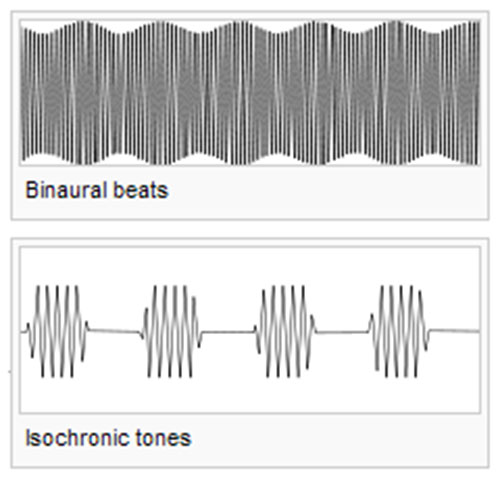
Eugene says
I picked few binaural meditations from youtube and used Audacity spectrum analyser to see if indeed say delta binaural meditation shows power in delta band. I saw no pick of power where delta would be.
Do you agree that spectrum analyser should show presence of say delta in those meditations. Im not sure they actually overlaid audible sound with delta.
bbfreak says
What frequency area are you looking on the analyzer? Remember that the resulting frequency happens in the brain; it is not the input frequency. So if you want to create 3 Hz Delta you might create a left ear frequency of 180 Hz and a right ear frequency of 183 Hz. The mathematical difference between the two will be interpreted in the brain.
Eugene says
Yes very good point. Boy, it’s easy to get caught.
Still I don’t recall seeing any peaks in the spectrum, like in your example I should have them at 180 and 183Hz. Even if these frequencies are at low power, they should add up to the music and show peaks. I will need to double check this. I recall getting smooth spectrum curve.
Thanks for catching my error.
bbfreak says
If the binaural beats frequency track is mixed with overlay music you may not see peaks. If the binaural beats are very prominent then you may do. Try taking a raw tone instead, without a music overlay. I think you may be correct in some cases though. Some people just put up music and claim it to be all sorts of things, and most people wouldn’t know. No every channel, but some.
Eugene says
Re: try taking raw tone instead
In mp3 from youtube I have only access to two stereo channels. Binaurals would be blended.
I have this idea to have music as stereo channels and additional two binaural channels with 180 and 183Hz respectively. And run analyzer on all of it. Would I see peaks. At what power of binaural. This can be done with Audacity.
I think if I dont see any peaks then binaural effect might be negligent. Does volume of beats matter? I’d think it cannot be too low.
bbfreak says
The binaural only needs to be audible to detect the vibrations, so louder doesn’t equal better or more effective.
The issue you have is not knowing which source frequencies were used. It could be 300 Hz and 303 Hz, or 120 and 122, or 401 and 400.5. All would result in delta.
judy says
Thank you Lawrence for posting this clarification; I was almost giving up after 3-4 days trying to search more clarification about Monaural beats.
As you said, more research has been done for binaural beats, yet not as much for monaural. Binaural beats are also much clearly explained and given examples, as well as how they are supposed to be done/listened to.
I have chronic insomnia. Listening to binaural beats with headphones for only 10-15 minutes solved my problem for not falling asleep easily. However, the quality cannot be sustained at all. Thus, I think I need to listen to it constantly during the entire sleep cycles, yet I am a side sleeper. Using headphones all night wouldn’t work at all.
That’s why I am thinking of trying Isochronic and/or monaural beats. There are more isochroinic beats available than monaural, yet I have problems with the pulsations in between. Any none-sustained sound bothers me during my sleep.
Thus, I have been thinking of making monaural beats on my own, yet I was so confused about is it true mono or stereo with one or two separate channels being made, as well as the output (not sure if it’s made two separate channels as in binaural yet only does using speakers become monaural. As if I get both stereo speakers placed next to each other, they get combined, so my ears perceive it as monaural???
Anyway, I had all sorts of questions like the one in the above paragraph before I read THIS post you wrote. Thank you and thank you!!!!!! All my answers are here.
One question here for you or anybody who knows the answer or just would like to feedback:
Let’s say I need to get 1hz beat for my brain entrainment. Do the 2 different solfeggio frequencies used to make either binaural or monaural beats matter to get certain effect: e.g. 200+201, 300+301, or 400+401 etc make difference how our brains or ears perceive????
I’m thinking if my sleep inducing beats are the most effective by using 432, 528, etc the solfggio frequencies, which are claimed to be calming for human beings, to produce delta frequencies???
bbfreak says
Hi Judy,
Look into Sleep Phones. See them here on Amazon.
The signal will still be mono. The speakers are simply reproducing the mono signal. Your ears will perceive the monaural beat (the same signal to both ears). Binaural beats are unique in that the left and right channels are producing different frequencies. Your brain combines these frequencies and interprets the mathematical difference between the two.
You don’t usually combine solfeggio (scale) frequencies to create binaural beats. I mean, I suppose you could, but the solfeggio scale is a set of specific tones (at certain frequencies).
Yes, to create 1 Hz you would have a 1 Hz difference in the left and right signals. Try using a lower frequency, like 190 + 191. This is more ideal.
Judy says
Thank you so much for your reply bbf.
very helpful again!!!
bbfreak says
You’re welcone!
Matt says
Nice article. I am curious about one particular point. Could you please provide a reference for the statement “Binaural Beats don’t need to be audible to be effective, making them accessible for those with partial hearing and the deaf.”
and
“Monaural beats need to be heard to be effective, and therefore the clinical application is not as broad, as it potential excludes those with partial hearing, and excludes those with full loss of hearing.”
Thank you.
bbfreak says
Hi Matt, have a read of this: https://www.binauralbeatsmeditation.com/how-binaural-beats-affect-the-deaf/
Brian says
Hey there, Thanks for putting all of this out. I was wondering about 2 things: 1. Why not just put 7 HZ out, instead of creating a delta?
2. Does the originating frequencies matter in terms of the effect, of the delta is the same? For example, using 500 and 507 HZ vs. 150 and 157 HZ?
Thanks!
bbfreak says
Hi Brian,
I’m not sure I understand your first question.
But on the second question: there are preferred carrier frequencies. The carrier is the lower of the two frequencies in the equation, which would remain the same if we were to change frequency in the track. For example, to create a 5 Hz binaural beat the preferred carrier frequency is 180 Hz (the higher frequency would be 185 Hz). The preferred frequencies are determined by Oster’s Curve. Please see this article for more information: https://www.binauralbeatsmeditation.com/oster-curve/
It’s just a reference, though, and you don’t have to follow the chart exactly.
I hope this helps.
Brian says
Thank you. The first question is why create a difference between 2 tones, and not just produce a 5HZ tone/signal and use that? For example, why not just create a 5HZ signal, vs. 180HZ and 185HZ?
bbfreak says
That’s technically what you do with Isochronic Tones, which are tones that turn on and off really quickly. It’s just different forms of the technology. With BBs the brain responds to receiving the two frequencies internally, one sent to the left and one sent to the right ear. It’s an auditory phenomenon.
Sutman says
5Hz is below the human hearing threshold so you wouldn’t hear anything if you just generated a 5Hz signal. Also Im guessing the “beat” phenomena of pulsing is caused by two interacting waves
Lewis says
Would you be able to explain how one can determine the carrier wave of a monaural beat?
I have read that it is the lower of the 2 tones
and I have also read
It is the ‘mean’ between the 2 tones.
Might you be able to clarify?
The information on this page has been incredibly insightful.
Thank you so much.
bbfreak says
No worries, glad it has been helpful. It would be the lower frequency of the two tones. So, say you had 150 hz and 155 hz creating a 5hz tone, if you wanted to go to 6 hz the higher frequency tone would change to 156 hz. The tone that remains the same is the carrier frequency.
Alexandre says
Thank you so much for this!
It’s a complete guide, technically and scientifically based.
Greetings from Brazil!
bbfreak says
You’re welcome. I’m glad you found it useful.